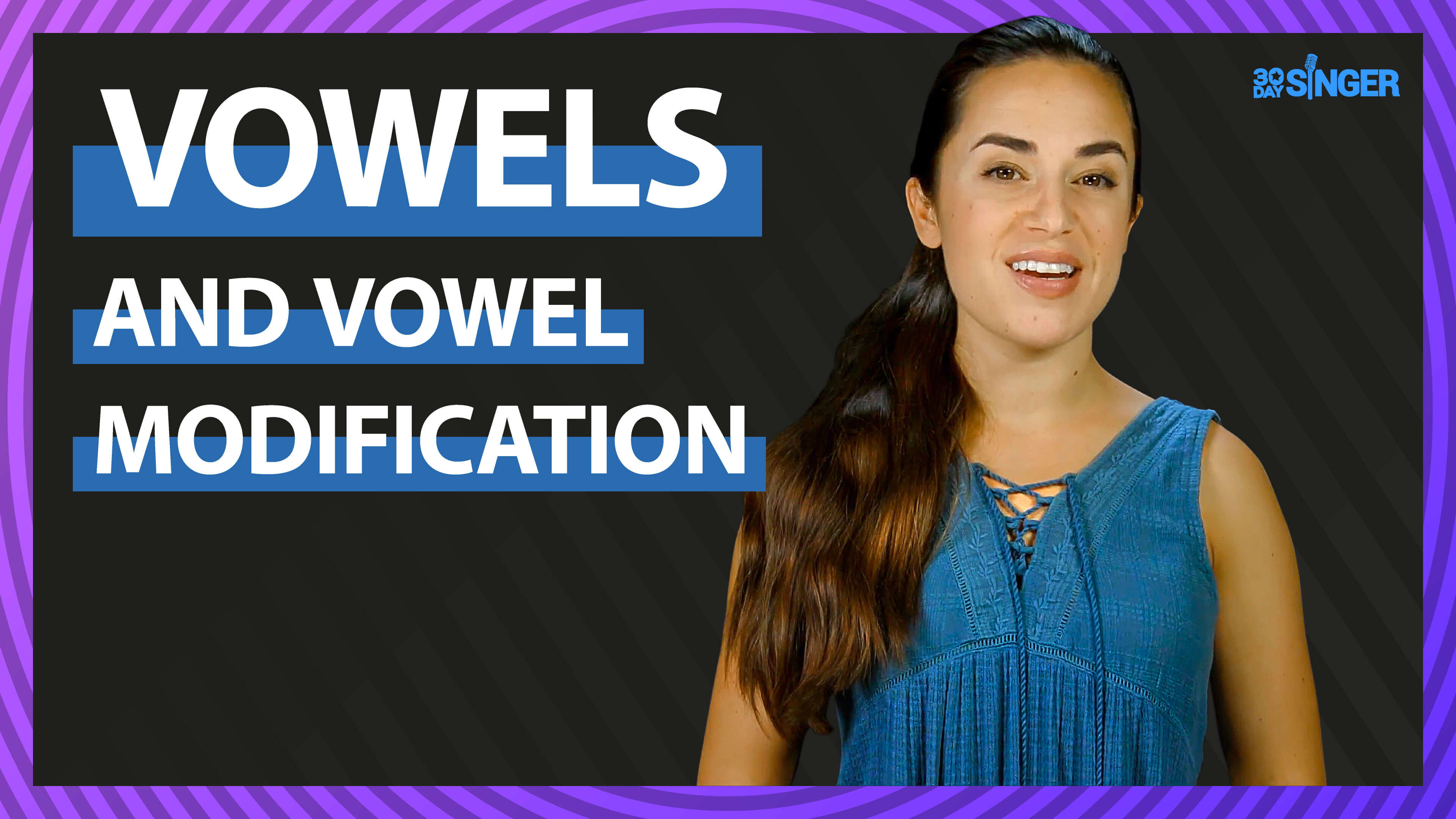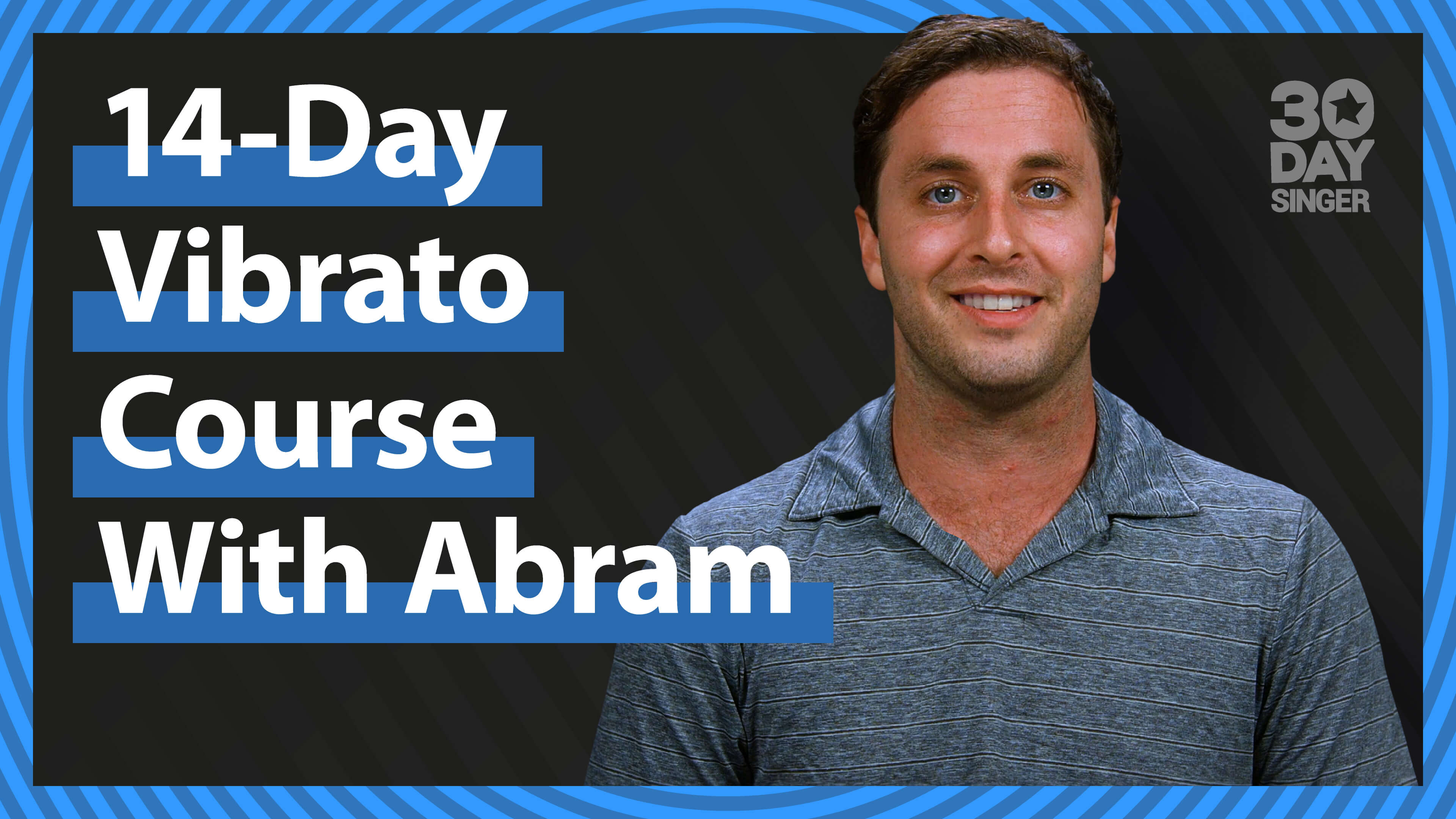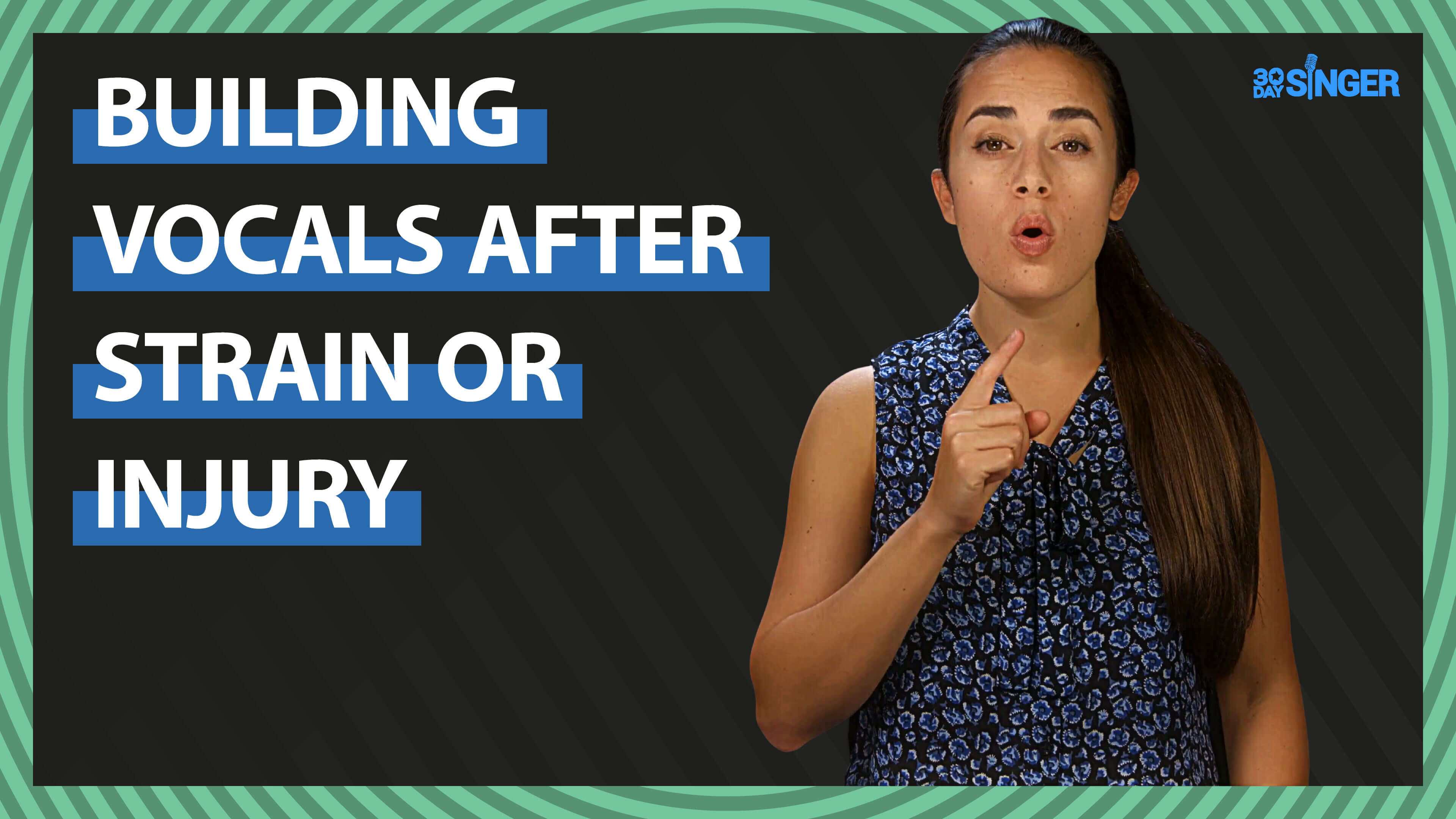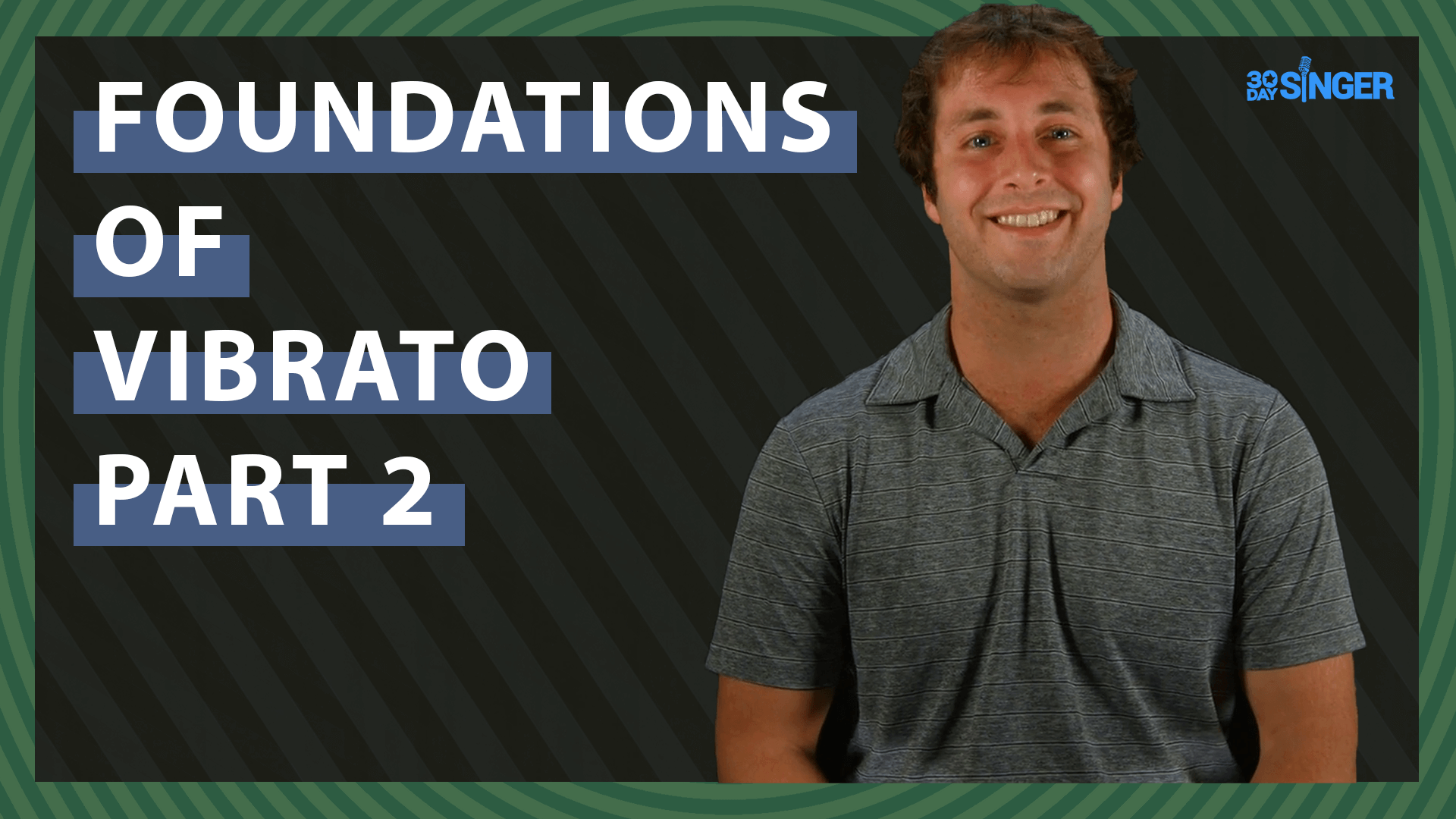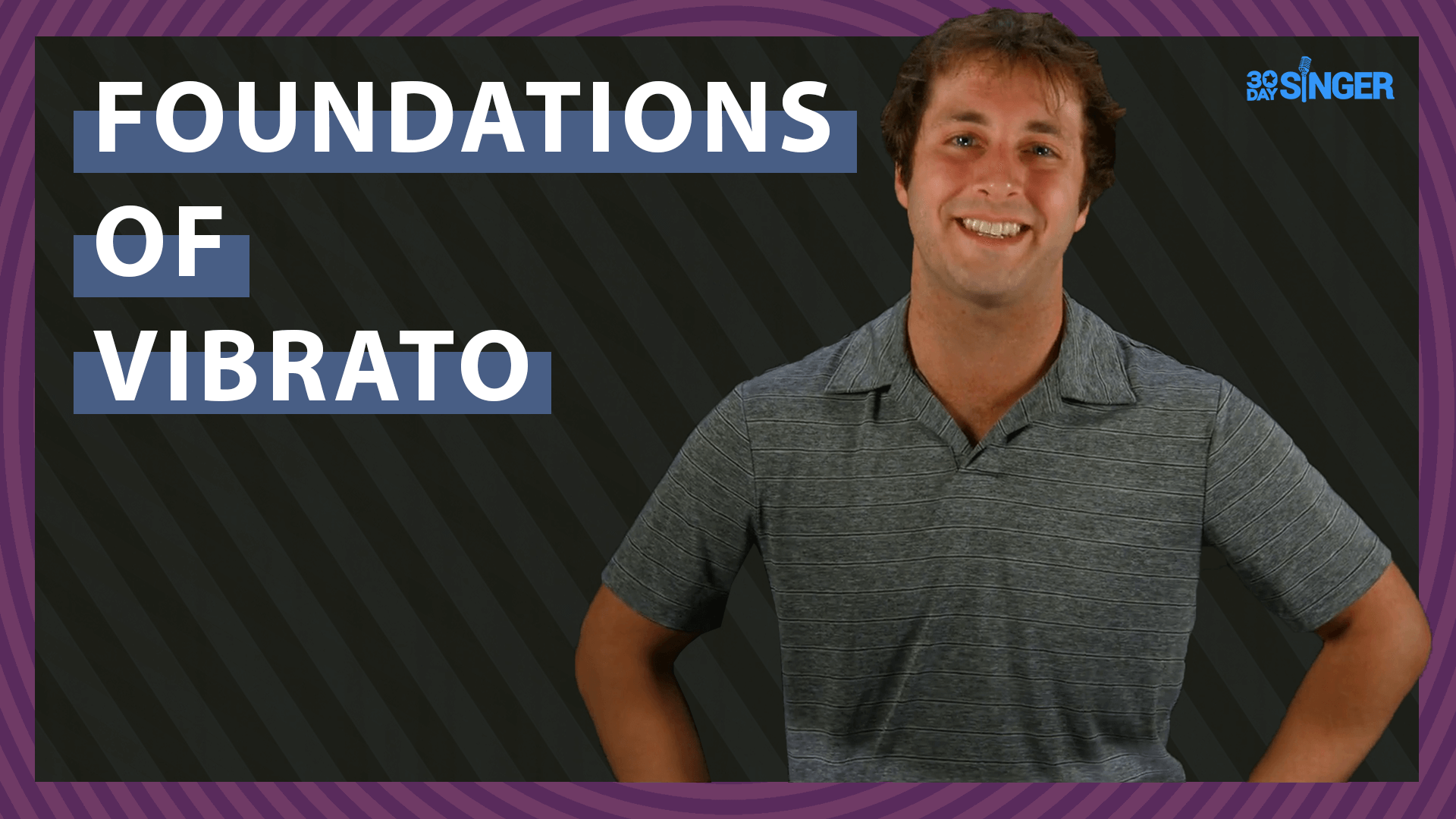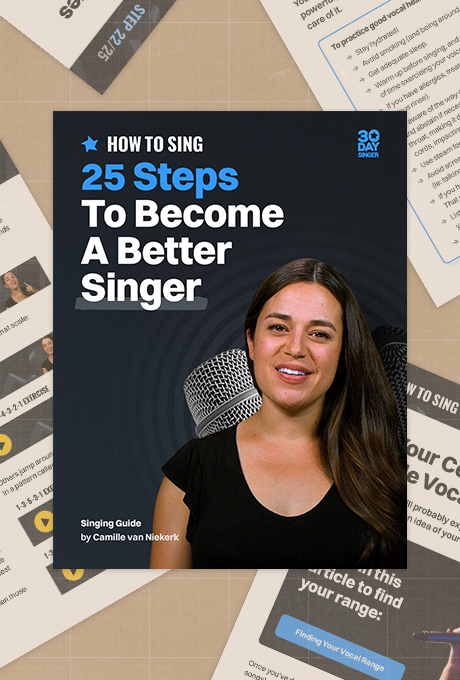Vocal Technique
Welcome to the Vocal Technique section of 30 Day Singer. These lessons focus on developing key singing techniques like vibrato, belting, singing higher or lower, breath control and much more. We offer guidance on how to learn these techniques and perfect them so you can perform with confidence. Some of these techniques are introduced in our beginner courses so if you need more time and focus on a particular area, these lessons come in very handy. You can bounce between these lessons freely or use a set combination of these lessons as part of your daily practice routine to monitor progress.
TUTORIALS
Mixed Voice 101
By Camille van NiekerkJoin Camille to learn the holy grail technique, mixed voice! Tune in as she breaks down this topic, and guides you in finding your personal mixed voice.
Vowel And Vowel Modification
By Camille van NiekerkWe all want to sing with with more ease, and a clear and beautiful tone. One way to achieve this is through vowel modification. Join Camille in this lesson as she provides an overview on singing vowels and vowel modification.
14-Day Vibrato Course With Abram
By Abram PoliakoffWelcome to your 2-week course on developing vibrato! Each day, you’ll learn 2 new exercises focused on a specific aspect of vibrato development. We begin with the foundations of vibrato development, then on to kickstarting your vibrato, next, vibrato control & troubleshooting, and finally the course will wrap up with some real song application. Join Abram as she guides you in learning this exciting and crucial skill!
Head Voice And Falsetto For Male Singer
By Camille van NiekerkEven if you don’t plan to sing a lot of songs that use head voice, you still need to work on that function to sing with greater ease and flexibility, to extend your range, and to develop a powerful, healthy mix. Join Camille in this lesson series on head voice & falsetto for male singers!
14-Day Vibrato Course With Camille
By Camille van NiekerkWelcome to your 2-week course on developing vibrato! Each day, you’ll learn 2 new exercises focused on a specific aspect of vibrato development. We begin with the foundations of vibrato development, then on to kickstarting your vibrato, next, vibrato control & troubleshooting, and finally the course will wrap up with some real song application. Join Camille as she guides you in learning this exciting and crucial skill!
Building Vocals After Strain Or Injury
By Camille van NiekerkWe all get sick, and some of us push ourselves a little too hard. Oftentimes, it can take a long time to recover, and we don't know the healthiest way to dive back in. In this tutorial, Camille will help you identify some common vocal issues, gently rebuild your vocals, and how to prevent future injury. Get ready to make your big comeback!
Foundations of Vibrato Part 2
By Abram PoliakoffAre you ready to take your vibrato training to the next level? If so, check out How to Sing with Vibrato: Part 2! We’ll cover common vibrato issues and vibrato usage in different musical genres. See you there!
Foundations of Vibrato
By Abram PoliakoffListen for the difference between these two phrases: [Sing phrase straight tone, then vibrato] What did you hear? The first time, I sang with straight tone [demonstrate], and the second time, I added vibrato [demonstrate]. Vibrato is the natural oscillation that occurs in healthy singing. It adds life and helps us convey emotion when we sing. Although some styles use more vibrato than others, it’s present in virtually every genre. If you’d like to learn more and work on developing natural vibrato, check out this tutorial!
How to Belt
By Mark MekailianIf you ever wanted to learn how to belt, big, powerful notes, like your favorite rock, gospel, blues or musical theater singers, then start with this lesson. You'll learn how to control your breath, compress the voice and use the extended pathway for a more beautifully resonant tone.
Frequently Asked Questions
Some great vocal warmups for singers start with gentle humming or lip trills to relax and engage your vocal cords without straining them. Then, work through some scales to gradually increase your pitch range and get your voice fully warmed up.
For a quick 5 minutes vocal warm up, try some lip trills or gentle humming for a couple of minutes. It’s effective and quickly preps your vocal cords for singing or speaking without overdoing it.
When your voice is sick, keep singing warmups light and gentle—like humming or low, quiet scales. Also, drink lots of warm fluids and rest your voice as much as possible.
Start with some light humming, followed by a few pitch glides (from low to high sounds) to get your voice comfortable. Finish with a few tongue and lip trills to help with articulation.
Two good vocal warm ups are humming and lip trills. These are super effective and easy vocal warm-ups that gently activate your vocal cords without causing strain. Both are great for starting any vocal exercise.
Breathing exercises and resonance drills, like humming and vocal slides, improve the quality and projection of your speaking voice. They help develop control and clarity, making your voice sound more confident.
Hydrate regularly, practice breathing exercises, and do daily warm-ups. Consistency with these habits will help your voice sound smoother and stronger over time.
To strengthen a weak speaking voice, practice deep breathing and speak from your diaphragm to add power. Also, try projection exercises like speaking in front of a mirror to boost confidence and clarity.
Focus on articulation exercises, like tongue twisters, and practice controlling your breath to avoid running out mid-sentence. Over time, these will improve clarity and help you speak with ease.
The four vocal function exercises are sustained phonation (holding a sound steadily), pitch glides (sliding between notes), lip trills, and staccato sounds on different pitches. They work together to strengthen and balance your vocal cords.


